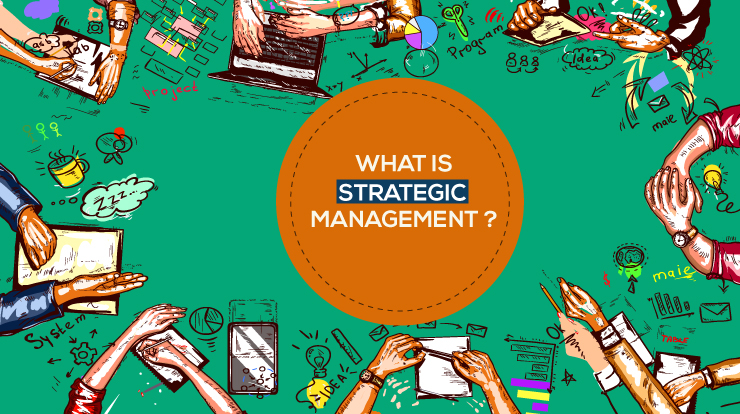
The purpose of strategic management is to create opportunities and succeed at them. The article simplifies Strategic Management in three simple words. Beyond this idea, the article further discusses the steps of strategic management
According to the Japanese tradition, every human being has a purpose of being called Ikigai. They say that everyone who is living has a life (iki) has a reason for living, an end result to be achieved (kai pronounced as gai). This is the same as what the French call raison d’être – the reason to be. More than anything it signifies the value one feels in his/her life, an objective that he discovers that he ought to achieve. Ikigai gives a reason to get up every morning and perform. In the times of darkness, the ikigai gives him light, the hope towards the eventual goal.
Large corporations and organizations don’t exist for no reason. An organization is seen as a group of people coming together to achieve a common goal. However, that common goal cannot be limited to something as self-fulfilling for the company proprietors as personal wealth. Or not even something slightly more benevolent as ‘maximizing the shareholder value’. Because organizations will cease to exist if they are not creating value for others beyond the organization. And obviously, there will be no wealth for the organization to thrive on.
Therefore, every organization that today is here has to reach there, where its objective is. To successfully manage this journey from here to there in a time-bound and scope-defined manner is what is the purview of Strategic Management. The objective of any organization is to win, to succeed. And therefore, simply put, the purpose of a strategy is to win. The three simple words to define strategic management would be ‘choices to win’.
In the broadest terms, the art of strategic management should be seen as five blocks:
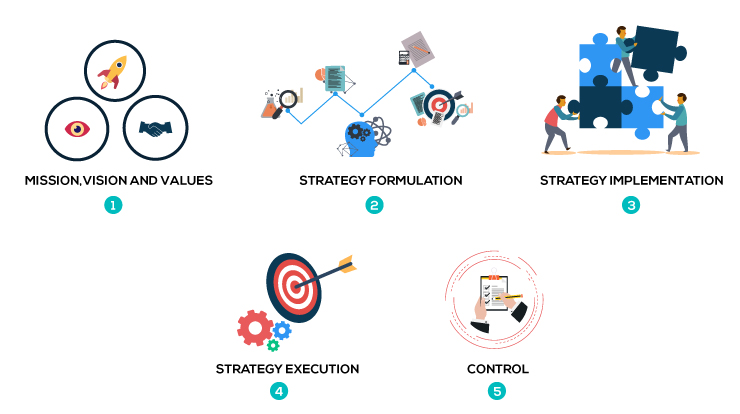
Continuously recrafting the objective and, therefore, the other four blocks as per the changing corporate and business scenario is what best describes the essence of work that goes into Strategic Management.
Mission, Vision and Values
The purpose of the business-school you study at could be “to impart holistic business education to the aspiring business leaders and entrepreneurs”. A more forward-looking statement that would give direction to this sense of being would be “to be a top-ranked business school in the country, considered to be in the top 5 business schools by the aspirants”.
The mission statement is about today, about whatever you are currently doing. It is the reason your company lives (to impart holistic education) and that is all you have got to do. The vision statement is the picture you draw out for yourself for the future. It is about how would the picture look if you stick to your mission (being the 4th best business school in the country).
Enveloping all of this is the beliefs and traditions that the organization (or, in this case, the business school swears by). These are the general forms of behavior accepted across the organizations – the Values. The journey to capture the vision will definitely go through or in accordance with the values.
These three tenets of the organization are extremely internal and the people outside the organization might not even know about the mission, vision and values of the organization. Sure, some organizations make a conscious effort to let their customers know about what the company stands, what values do they abide by and what causes do they care for, but the companies who don’t share are by no means perceived to be lesser than the ones who do.
Strategy Formulation in Strategic Management
Businesses are not created and run in a vacuum. There are customers, competitors, supplier, channel partners who make the business happen. No enterprise can cut out competitors, suppliers and all the stakeholders from their scheme of things. So beyond these internal resolutions (mission, vision and values) a company needs to develop a strategy that spells out the entire plan of action. The plan of action entails how does the company do its business of creating value for the customers in a way different from its competitors. Basically, gives out how does the company win in a competitive environment. The strategy statement is a written manifestation of the strategic management plan. The strategy statement makes it easy for everyone in the organization to understand the strategic intent and be in line with it. The end result of strategy formulation is to come up with a strategy statement.
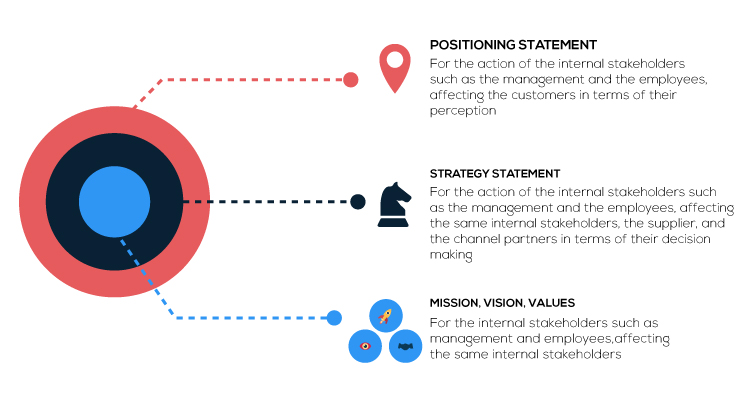
The diagram gives a view of which business/strategy statement applies to and impacts whom.
Steps in Strategy Formulation
- Strategy formulation begins with spelling out a strategic objective and scope. Strategic objective gives the entire exercise its aim. The scope defines a boundary, not prescribing the things to try but clearly defining the things to never go for
- Environment Assesment: Assess the external environment through Porter’s Five Forces Model and PESTLE Analysis. The internal environment of the organization can be assessed through SWOT Analysis. This gives the management of the sense of the playing field they are in and what are the ground rules.
- Create Value: The next crucial step is to create value for the customers which is perceived highly by them. Good strategies are rendered meaningless by bad products.
- Introspect: What is the one thing (at least) that your company does better than anyone else. This is going to be your competitive advantage amidst your competitors.
- Make a choice: Your company needs to do things differently than its competitors. The idea is to offer to the customers something that is differentiated. This could be a differentiation in cost (i.e. a cost advantage) or a differentiation in offering at the similar price. This choice is in accordance with the competitive advantage
A few things to note here is that the Porter’s Five Forces model determines the profitability of an industry. So for example, the profitability would be extremely low for a capital-intensive industry like the commercial aviation industry. The asset-light software industry would come out to be profitable for this model.
Further, the strategic intent coupled with the strengths that are assessed from the SWOT is crucial. It gives an idea of what would be the most attractive value proposition for the customer. How this value is created and delivered is where the competitive advantage comes into play. Competitive advantage and its sustainability is the subject of detailed discussion in another blog post to be followed soon.
Is Strategic Management even important?
Not really, that is if you are running a monopoly. Also, no if you are in the illegal practice of cartelization, where all of the contemporaries coordinate each other’s moves. In all other practical scenarios, a strategy is essential. Increasing competition puts the onus on each business to be different from the other. The pursuit is to provide a value different from the one everyone else is offering.
Reiterating, strategic management is coming up with ‘choices to win’. Simply put, the strategy or the strategy statement is the answer to a few important question that every enterprise needs to answer for itself. These questions are:
- Where do we compete?
- What unique value do we bring?
- What capabilities and resources do we possess i.e what is our competitive advantage?
- How do we make this competitive advantage sustainable?
In the subsequent installment of this article, we would discuss what exactly is a competitive advantage. What are the types of competitive advantages and how does one identify and sustain this competitive advantage. Further, in other installments, we conclude this introduction to Strategic Management by discussing Strategy Implementation, Execution, and Control.


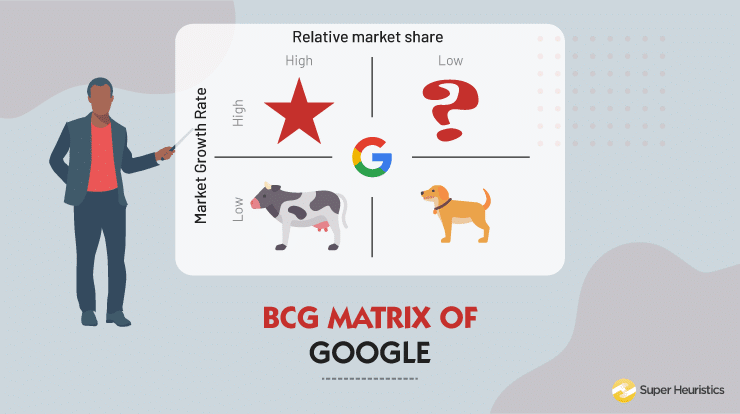


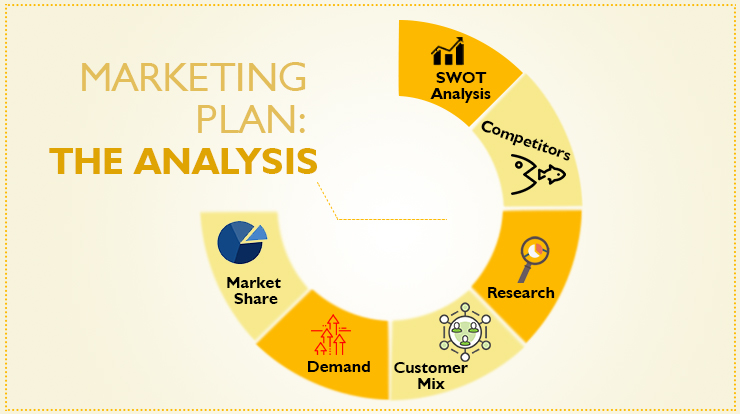
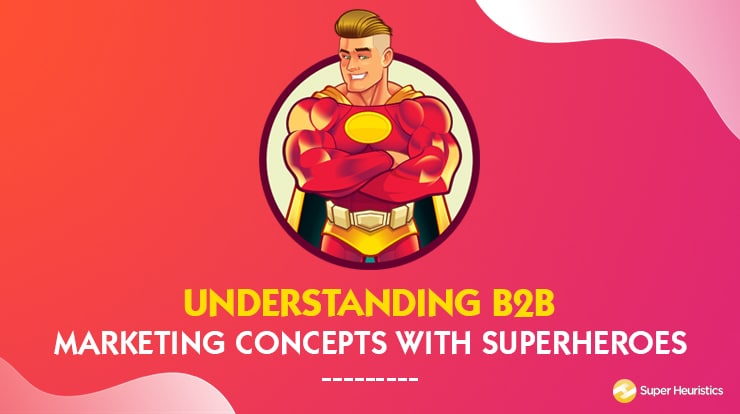
Very impressive!